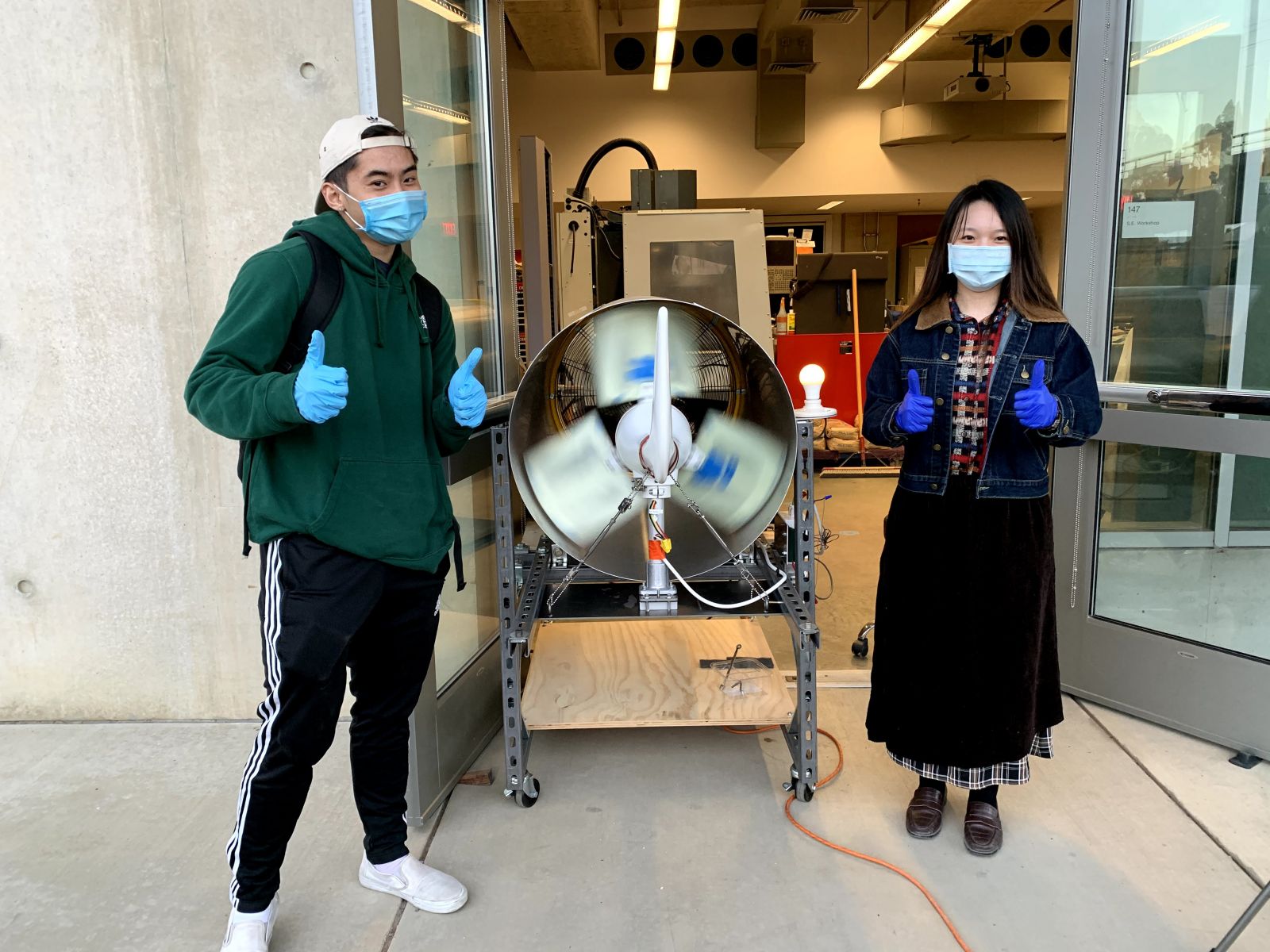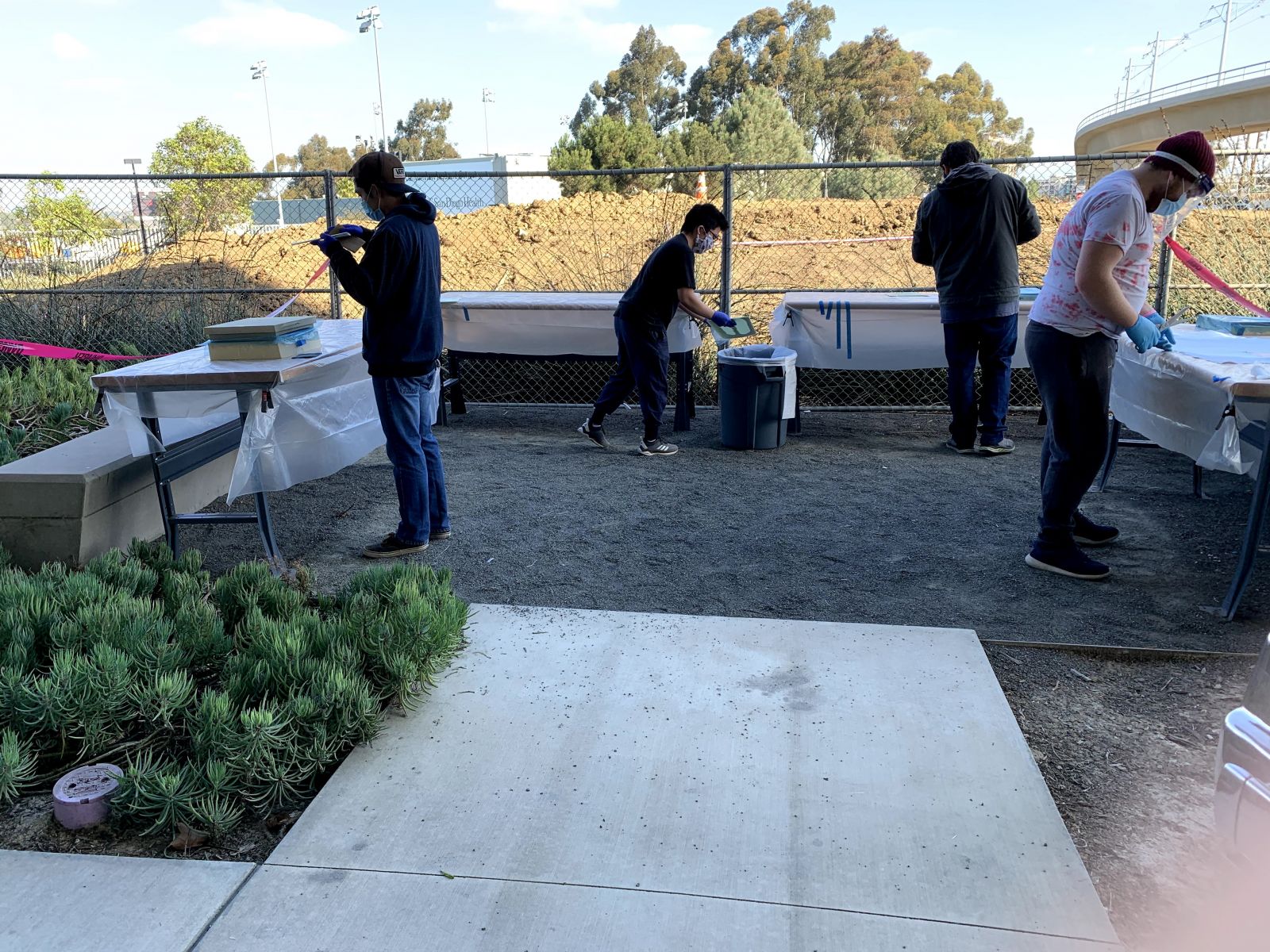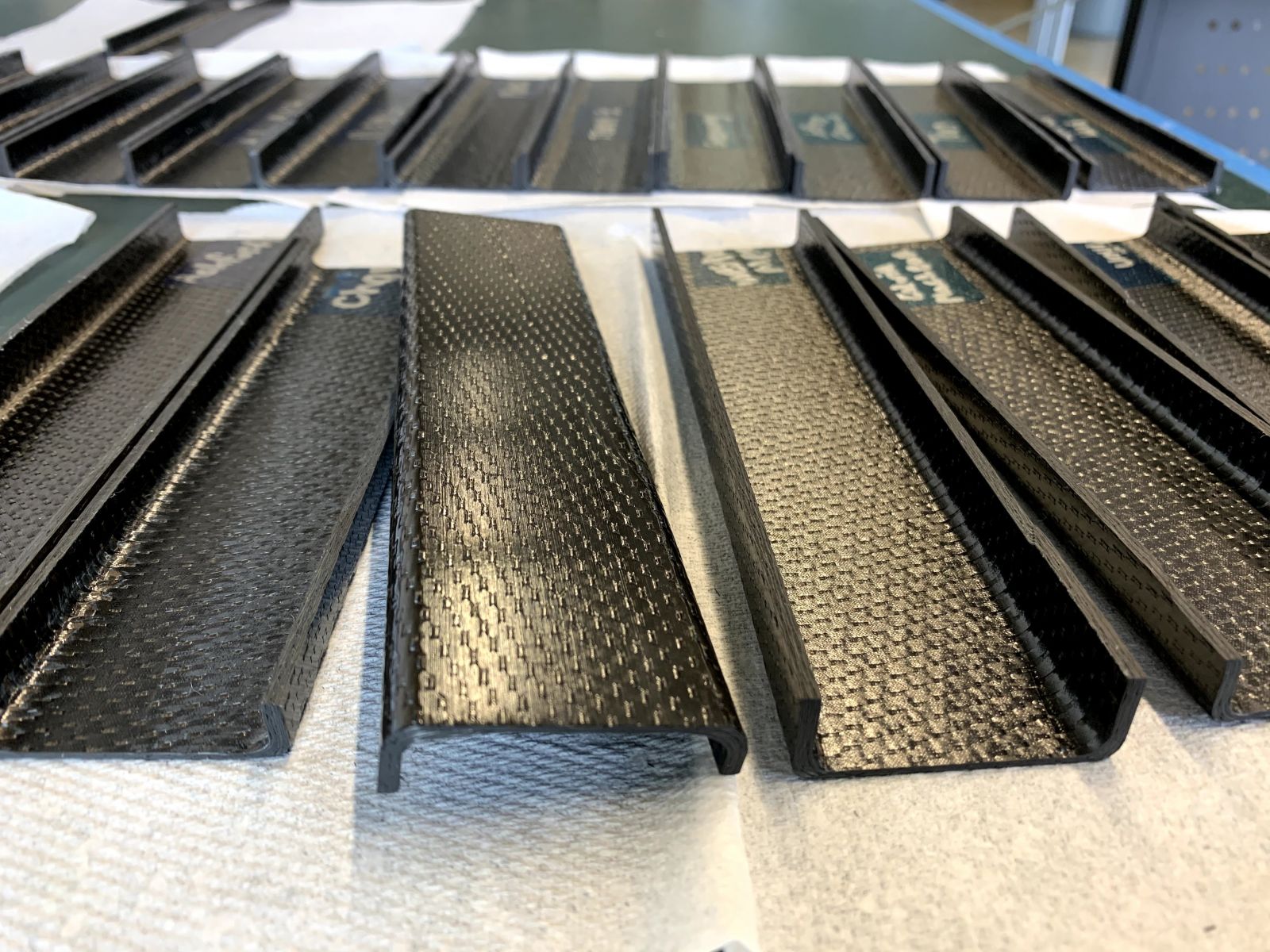News Release
Structural engineers get hands-on experience with composite materials
 |
| Students test the performance of the blades they designed and built using composite materials. |
March 11, 2021-- Structural engineering students at the Jacobs School got hands-on experience designing, manufacturing and analyzing structures made from composite materials through the Design of Composite Structures course, held in-person thanks to Â鶹´«Ã½’s Return to Learn policies.
“This is actually a pretty unique class that I don't think you find in engineering departments across the country in terms of the subject matter, and also that it’s taught at the undergrad level,” said Hyonny Kim, a professor of . “Composite materials are high performance materials used to make aerospace structures and space structures. They’re extremely light, strong, and stiff. The class is about how we design them, manufacture them, and quantitatively analyze them.”
The course, held in the fall quarter, started off in a reduced-capacity setting indoors, with half of the students completing a lab project one week, and the other half the following week. When county COVID-19 requirements shifted to outdoor only-education, Kim and his team of dedicated graduate teaching assistants moved the course outside.
“I felt and observed that the students really enjoyed this,” said Kim. “I think they got a lot out of it, coming to campus, having some direct interaction with instructors. There was a lot of good learning as well as just the psychological benefits of feeling engaged with school, being able to have some social interaction with their teammates. I think it was all around really good for all the students.”
 |
| Kim and the TAs prepared individual lab kits for each student taking the course remotely. |
In order to make this lab course work for the 26 students in-person as well as the 17 students taking the course remotely, Kim and the TAs created individual kits for each of the three lab projects, that students picked up or had shipped to them.
For the labs, students first made a flat plate with carbon fiber/epoxy composite to get accustomed to the process of using composite materials. They then made a carbon fiber structural channel beam with a different type of composite that is what’s called pre-impregnated (prepreg), where the epoxy is already combined with the fibers; this prepreg material is what most high-end aerospace structures are made with. For the third lab, students made beams out of fiberglass with a foam core.
They put this understanding of composites to use for the final project: a competition to see which team could build the most efficient wind turbine blades using a glass fiber/epoxy composite. The student teams had to figure out what angle and configuration to set the blades; build them as light and aerodynamic as possible; and have them generate the most power from a controlled fixed-speed wind source.
 |
| Students working on lab assignments outside. |
Each team of five students included two who were completely remote, and were responsible for designing the 3D-printed part that was used to position their team’s blades in the wind turbine.
“We really tried to give everyone, including the remote students, as close to a hands-on role as possible,” Kim said, noting that after months of quarantining and being isolated from friends, instructors and the campus, students seemed to really appreciate the opportunity to meet safely in person.
 |
| Students made carbon fiber structural channel beams with prepreg material. |
“The class seemed to work really well,” said Kim “I really emphasized the right culture to the students: a no blame, no shame culture where if they, lets say, got sick or were exposed or had concerns because of X, Y or Z, they didn’t need to justify telling me they couldn’t or shouldn’t come to class that week. I broadcast that message really clearly, and I thought the students were fantastic. They were excellent and very responsible about that.”
Many of these students are now in the structural engineering capstone design course this quarter, co-taught by Kim, who is also teaching a Repair of Aerospace Structures class that also conducts labs outside.
Media Contacts
Katherine Connor
Jacobs School of Engineering
858-534-8374
khconnor@ucsd.edu